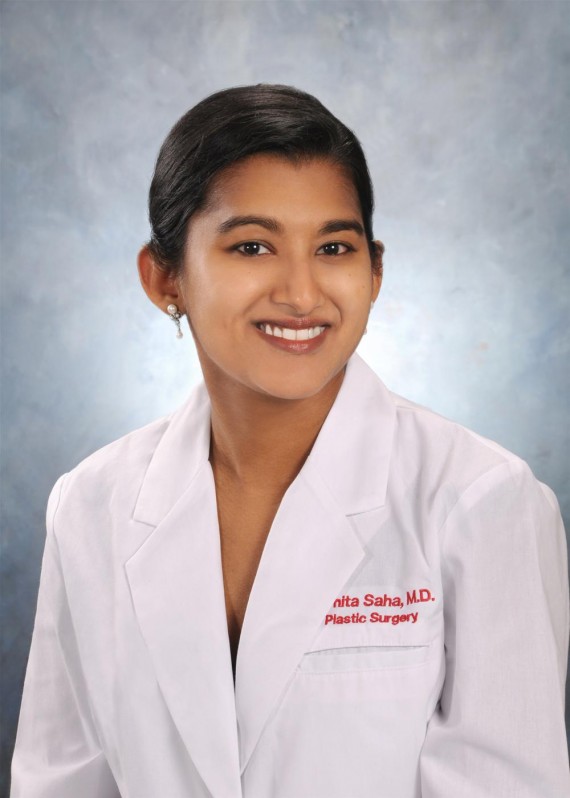Now Scheduling Primary Care Appointments Online. Book Now.
Women considering breast reconstruction should set realistic goals, understand process

By Sumita Saha, M.D.
Breast reconstruction can be physically and emotionally rewarding for a woman who has lost a breast, most commonly because of cancer. The topic bears special consideration during National Breast Cancer Awareness Month, observed every October.
Before starting the procedure, women should realize that – although the ideal is a natural-looking and symmetric breast – a reconstructed breast never will look or feel exactly the same as the original.
Realistic goals will allow the result to be satisfying. The patient can look at “before” and “after” photos of breast-reconstruction patients to get an idea of what to expect.
It also is important to know the reconstruction process, which usually involves multiple procedures performed in multiple stages.
Breast reconstruction can begin at the same time as mastectomy/lumpectomy, or can be delayed until after recovery from the cancer excision and additional therapies (chemotherapy and radiation). It is preferable not to radiate a reconstructed breast.
Decisions also must be made about the other breast. At times, a lift, reduction or enlargement may be recommended to improve symmetry of size and position. Some women also choose to have mastectomy and reconstruction of both breasts. This may allow better symmetry.
Breast reconstruction is achieved primarily with breast implants and tissue flaps. Before implants can be placed, healthy skin tissue must be expanded. The expander may be placed at the time of mastectomy, and multiple office visits will be required to fill the expander slowly.
A second surgery is required to replace the expander with the final implant. Because healthy skin is crucial to maintain good coverage of the implant, such reconstruction usually is not recommended in patients who have undergone radiation.
Flap techniques reposition a woman’s own muscle, fat and skin to create a new breast. These tissues most commonly come from the abdomen or back. Although the tissues are repositioned, the blood supply remains intact and blood vessels are left attached as a “leash,” limiting the distance the tissues can be moved. At times, the flap is not sufficient for recreating a whole breast. In such cases, both a flap and an implant are used, with the flap providing the tissue to cover the implant.
All surgeries carry the risk of infection and poor healing. If an implant is used, there are low risks of scar formation and rupture of the implant. If a flap is used, there is a low risk that the flap may die due to decreased blood supply. Such complications may require additional surgeries.
Further surgeries also include minor corrections for symmetry and creation of the nipple and areola. Sometimes these can be performed in an office-based setting under local anesthesia.
For greatest success and satisfaction in breast reconstruction, select a plastic and reconstructive surgeon with whom you feel comfortable. Before proceeding with any surgery, be sure your surgeon understands your goals – because the ability to look and feel whole can dramatically improve your self-esteem and quality of life.
Sumita Saha, M.D., is a surgeon with Oaklawn Medical Group – Plastic and Reconstructive Surgery. She is also seeing patients at Oaklawn Wound Care Center. For information and a free cosmetic consultation, contact (269) 781-1178.